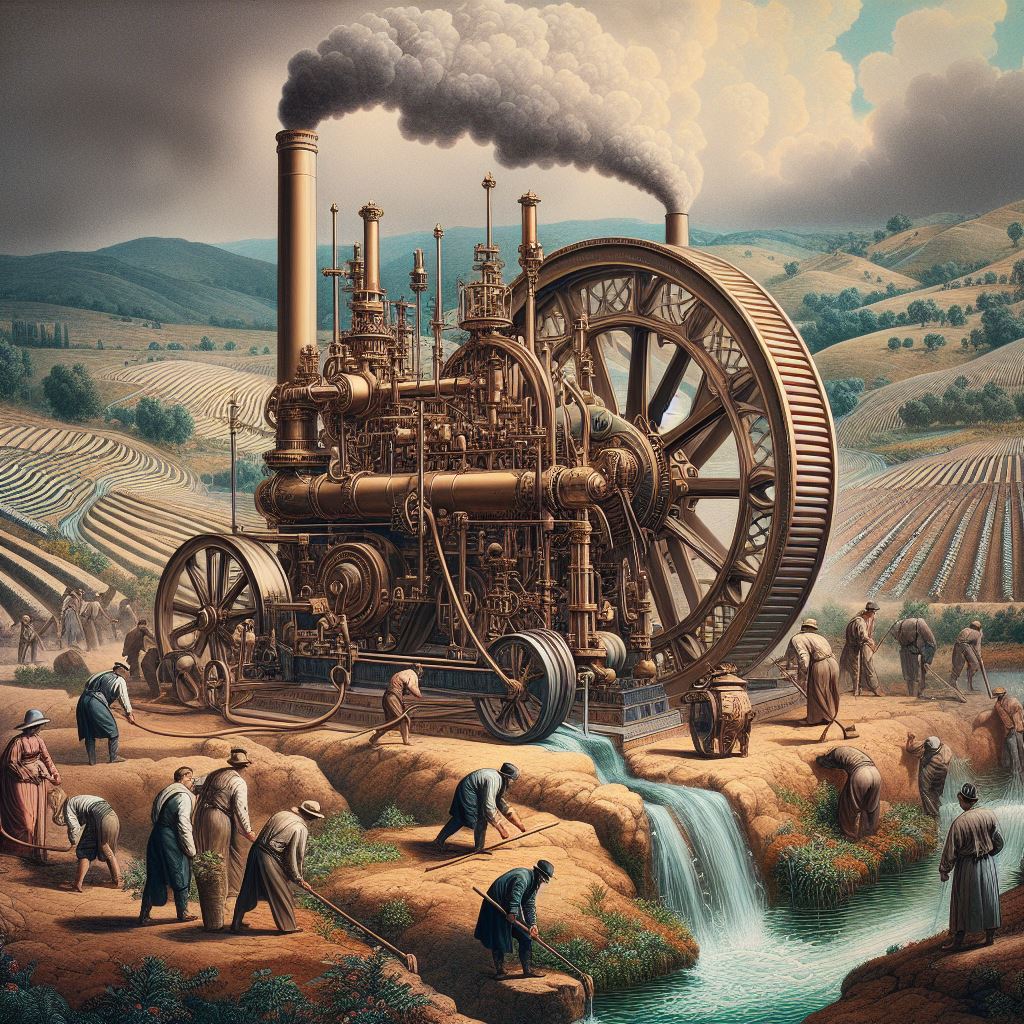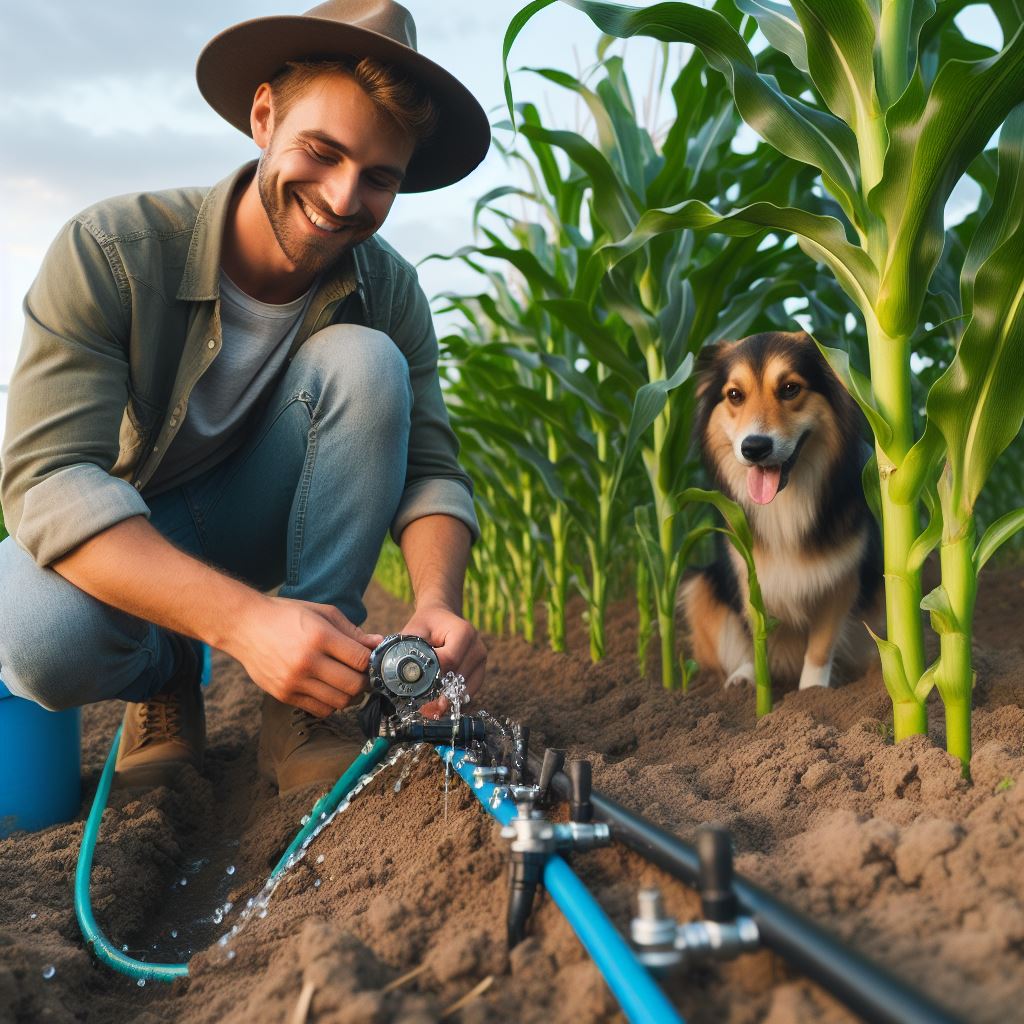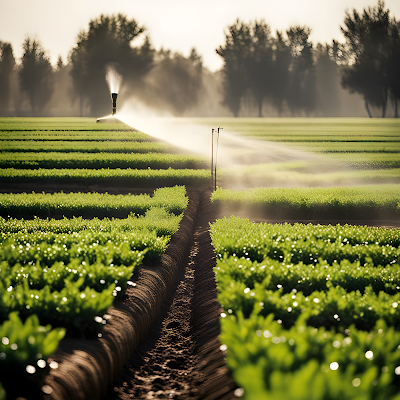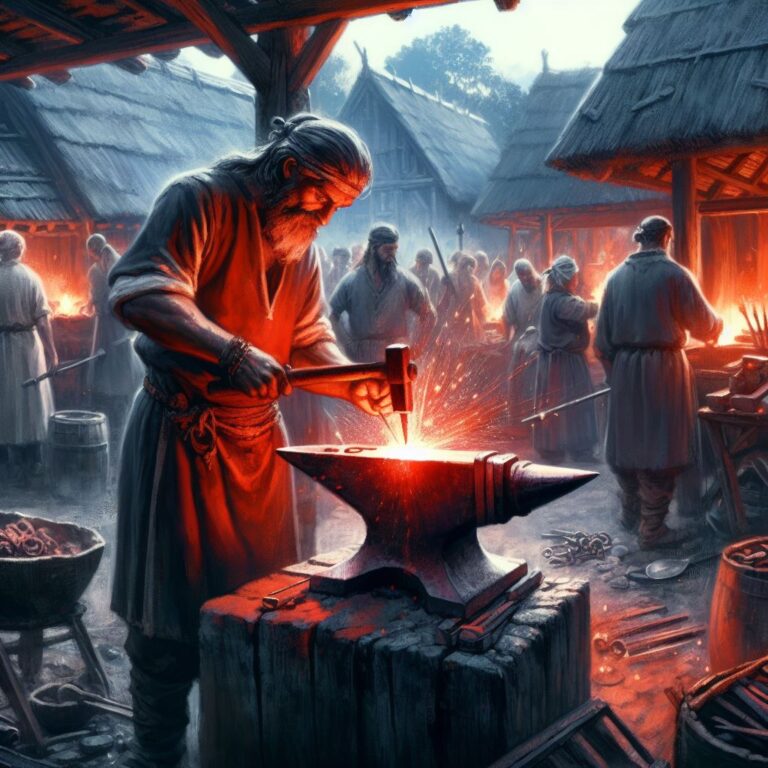Introduction
From the creation of the wheel to the internet, humans have made incredible innovations throughout history. The invention and history of irrigation, however, is arguably one of human history’s most important milestones.
More than just watering plants, agricultural irrigation represents a transformative leap in our relationship with the land. It is the art of coaxing life from parched soil, defying the whims of fickle weather, and nurturing the very foundations of civilization. This is not merely a tale of technology; it’s a saga of human resilience, ingenuity, and the unwavering pursuit of sustenance.
Imagine vast arid plains, once barren and unforgiving, now teeming with verdant life. This is the magic of irrigation. Its genesis, shrouded in the mists of time, dates back to the cradle of civilization, where ancient communities in Mesopotamia and the Nile Valley harnessed the power of flowing water to nourish their crops. From ingenious canal systems to intricate waterwheels, their innovations laid the groundwork for a global agricultural revolution.
But the story of irrigation doesn’t end in the past. It’s a vibrant tapestry woven across continents and millennia. From the sophisticated rice terraces of Asia to the awe-inspiring aqueducts of the Roman Empire, each era has witnessed unique advancements in irrigation technology. Today, we stand at the precipice of a new chapter, with cutting-edge techniques like drip irrigation and precision agriculture promising even greater efficiency and sustainability.
History of Irrigation (Early Forms of Irrigation Systems)
Irrigation, the lifeblood of civilizations, boasts a rich tapestry woven across continents and millennia. Its early chapters unfold in the fertile valleys of ancient Mesopotamia and Egypt, where the capricious dance of river floods spurred human ingenuity.
Taming the Nile and Tigris: Around 6,000 BC, these regions witnessed the first whispers of organized irrigation. Farmers, relying on the predictable annual inundations of the Nile and Tigris, devised simple yet effective systems. Canals and ditches, carved with rudimentary tools, snaked across the thirsty land, diverting precious water onto fields. Archaeological evidence in Mesopotamia, like the Jarmo site (7050-6500 BC), reveals intricate networks of canals and raised fields, testaments to this early water management.
Beyond Surface Streams: As populations grew and demands increased, the human thirst for innovation mirrored that of crops. The qanats of Persia, born around 500 BC, stand as remarkable feats of engineering. These underground tunnels, tapping into deep water sources, snaked for kilometers, defying arid landscapes and nourishing vast stretches of land. Rome, the mistress of aqueducts, further pushed the boundaries. Marvels like the Pont du Gard, channeling water over vast distances, not only sustained sprawling cities but also fueled agricultural prosperity.
A Tapestry of Techniques: While sharing the common goal of quenching thirsty soils, early irrigation methods adapted to diverse landscapes and resource constraints. Let’s delve into some specific techniques:
Surface Irrigation:
This ancient workhorse, employed in Egypt and Mesopotamia around 6000 BC, relied on gravity to do the heavy lifting. Canals, like those unearthed in the Saqqara region of Egypt, diverted floodwaters directly onto fields. While effective, this method had limitations. Uncontrolled floods could devastate crops and settlements, while insufficient floods left fields parched. The Mayas, however, ingeniously mitigated this risk by building raised “chinampas” (artificial islands) in flooded areas, maximizing their agricultural potential.
Sprinkler Irrigation:
Not all regions boasted readily available streams or predictable floods. In ancient China, around 2000 BC, farmers crafted ingenious bamboo sprinklers, channeling water from wells or ponds, mimicking the gentle caress of rain. Murals from the Han Dynasty depict these sprinklers in action, showcasing their widespread use.
Drip Irrigation:
This water-conscious technique, often associated with modern times, finds its roots in ancient ingenuity. The Aztecs and Mayans employed clay pots, strategically buried near plant roots, allowing water to seep out drop by drop, maximizing efficiency and minimizing waste. Archaeological finds in Teotihuacan, Mexico, reveal sophisticated networks of interconnected clay pots, whispering tales of sustainable water management practices.
Evolution of Irrigation Techniques
From the fertile cradle of Mesopotamia to the arid expanses of Persia, irrigation has been the lifeblood of civilizations, shaping agricultural landscapes and fostering human prosperity for millennia. Let’s embark on a chronological voyage, tracing the evolution of irrigation systems through key milestones, enriched with historical studies, archaeological finds, and references:
6,000 BCE – Early Seeds of Ingenuity:
- Mesopotamia: Evidence from Jarmo (7050-6500 BCE) reveals the earliest traces of irrigation in the form of simple canals and raised fields, suggesting rudimentary water management practices. (Reference: Hole, F., Flannery, K. V., & Neely, J. A. (1969). Prehistory and human ecology of the Deh Luran plain. Memoirs of the Museum of Anthropology, University of Michigan, 14.)
- Egypt: Traces of early irrigation systems appear along the Nile, with communities using canals and ditches to divert floodwaters onto fields. (Reference: Bard, K. A. (2005). An encyclopedia of the ancient Egyptian world. Routledge.)
3,100 BCE – Nile’s Embrace and Engineering Marvels:
- Egypt: The Maydum canal system and Saqqara waterworks emerge, showcasing sophisticated engineering techniques for harnessing the Nile’s annual floods and irrigating vast agricultural lands. (Reference: Verhoef, L. (2000). The Saqqara waterworks: Aspects of an ancient Egyptian hydraulic complex. Dutch Archaeological and Historical Society.)
2,000 BCE – Beyond Surface Waters:
- China: Bamboo sprinklers, depicted in Han Dynasty murals, come into use, marking the adoption of sprinkler irrigation for watering crops from wells or ponds. (Reference: Needham, J. (1986). Science and civilization in China. Volume 4, Part 2: Mechanical engineering.)
- Mesopotamia: Shaduf, a lever-operated water-lifting device, appears in archaeological records, suggesting advancements in irrigation technology beyond gravity-driven systems. (Reference: Jacobsen, T. (1985). The shaduf and the well-sweep: A historical-technical investigation. Technology and Culture, 26(4), 680-700.)
700 BCE – Defying Aridity: The Qanat’s Rise:
- Persia: The qanat, an ingenious underground tunnel system, emerges, allowing communities to tap into deep groundwater sources and transport water over long distances in arid regions. (Reference: Wilhite, D. A. (2008). Sustainable water resources management in arid regions of the world: Qanat systems in Iran. Journal of Water Resources Management, 22(2), 367-382.)
300 BCE – Hydraulic Masterpieces:
- Greece: Advanced irrigation systems employing aqueducts, canals, and reservoirs flourish, exemplified by the aqueduct on Kos Island and the Eupalinus Tunnel on Samos. (Reference: Hodge, A. T. (1992). Roman aqueducts and water supply. American Journal of Archaeology, 96(1), 5-29.)
- India: Evidence suggests the construction of large-scale irrigation tanks and canals in the Tamil Nadu region, signifying the development of sophisticated water management systems. (Reference: Kulkarni, A. R. (1989). Ancient irrigation tanks of Tamil Nadu. Mittal Publications.)
200 BCE – Lifting the Waters:
- China: The chain pump revolutionizes water lifting, employing an endless chain of buckets to raise water from rivers and streams for irrigation, significantly expanding agricultural reach. (Reference: Needham, J. (1986). Science and civilization in China. Volume 4, Part 2: Mechanical engineering.)
Beyond 200 BCE:
- Roman Empire: Roman engineers adopted and refined irrigation technologies like aqueducts and canals, expanding agricultural production across their vast territories. (Reference: Issar, A. (2007). The oasis of Kharana in the Roman Empire: A case study of water management in the arid zone. Journal of Arid Environments, 71(1), 119-135.)
- Americas: Pre-Columbian civilizations like the Incas and Mayans develop sophisticated irrigation systems, including raised fields and canal networks, adapted to their specific landscapes and crops. (Reference: McAnany, P. A. (2009). Living on the edge: Early human adaptation and occupation of arid environments. In The Oxford Handbook of World History (pp. 41-66). Oxford University Press.)
Modern Era (18th Century – Present):
- Industrial Revolution: Steam engines and pumps revolutionize water lifting, leading to the development of large-scale irrigation projects. Canals like the Grand Canal in China and the Indus Valley Irrigation System in India are constructed, significantly expanding agricultural capacity.

- 20th Century: Advancements in materials and technology further transform irrigation. Concrete dams and canals improve water conveyance and storage, while sprinkler and drip irrigation systems increase efficiency and water conservation.
- 21st Century: The focus shifts towards sustainable water management practices. Precision agriculture utilizes sensors and data analysis to optimize irrigation, while desalination technologies provide access to freshwater in arid regions. The challenges of climate change and population growth highlight the critical role of efficient and sustainable irrigation practices in ensuring global food security.
Present and Future of Agricultural Irrigation
Traditional irrigation techniques, while venerable, are facing the twin challenges of efficiency and sustainability in the 21st century. Enter a world of cutting-edge advancements, where researchers and organizations are reimagining water management through innovative technologies. Let’s embark on a deeper exploration:
Precision Irrigation:
Drip Irrigation: Pioneered by Israeli drip irrigation expert Simcha Blass in the 1960s, this method leverages emitters like those developed by Netafim, an Israeli irrigation giant, delivering water directly to plant roots. Advanced systems like the GroSens™ by METER Group utilize soil moisture sensors and automation to tailor water application based on real-time data, as Dr. Amir Goldman of Hebrew University researched.
Center Pivot Systems: Equipped with variable rate technology like Lindsay Corporation’s FieldNET™, these sprinklers rotate, precisely distributing water based on individual field zones. Research by Dr. Gregory Bordner of the University of Nebraska-Lincoln has optimized their use across diverse terrain and soil types.
Advanced Technologies:
Subsurface Drip Irrigation: Buried emitters like those developed by the Australian company Subsurface Drip Irrigation (SDI) deliver water directly to root zones, minimizing evaporation and weed growth. Dr. Gideon Levy of Ben-Gurion University of the Negev has demonstrated its effectiveness in arid regions.

Soil Moisture Sensors: Real-time data on soil moisture content is crucial. Companies like METER Group and Decagon Devices offer advanced sensors, informing irrigation decisions and reducing overwatering. Dr. Jiayang Ma of the University of California, Davis, research is further refining sensor technology.
Remote Monitoring and Automation: The Internet of Things (IoT) is transforming irrigation. Companies like T-Systems and CropX offer sensor networks and cloud-based platforms like FieldNET™ by Lindsay, enabling remote monitoring and control, improving efficiency and reducing labor costs. Research by Dr. Nima Mohseni of Texas A&M University is pushing the boundaries of automation.
Research Frontiers:
Nanotechnology: The development of nano-coated membranes and emitters by researchers like Dr. Ali Rahimi of the University of Illinois Urbana-Champaign could further minimize water evaporation and enhance delivery precision.
Bio-inspired Irrigation: Mimicking natural water uptake mechanisms through plant-based sensors and microfluidic channels is a fascinating frontier. Research by Dr. Manu Srivastava of the Indian Institute of Technology Bombay and Dr. Jin Yeol Park of Kyung Hee University in South Korea is paving the way for this revolutionary approach.
Wastewater Reuse: Treating and utilizing wastewater for irrigation holds immense potential. Organizations like the World Health Organization and the International Water Association are leading research efforts, while companies like Hydraloop are developing innovative treatment systems.
Future Visions:
Closed-Loop Systems: Recirculating and treating irrigation water within controlled environments could minimize freshwater withdrawals and environmental impact. Companies like Controlled Environment Agriculture (CEA) Solutions and Plenty are pioneering this technology.
Artificial Intelligence (AI): AI-powered irrigation systems like those being developed by IBM and Microsoft could analyze complex data sets and optimize water applications in real-time, further enhancing efficiency and sustainability. Research by Dr. Amir Goldman of Hebrew University is shaping the future of AI-driven irrigation.

Climate-Resilient Practices: Developing drought-tolerant crops and irrigation systems adapted to extreme weather events is crucial. Organizations like the International Center for Agricultural Research in the Dry Areas (ICARDA) and the CGIAR Research Program on Water, Land, and Ecosystems (WLE) are leading the charge, while companies like AquaCrop are developing drought-resistant crop varieties.
The Impact of Irrigation
Human civilization was significantly impacted by the development of irrigation. It made it possible for crops to grow in previously uninhabitable areas, which facilitated the growth of human settlements and the emergence of civilization as we know it today. Additionally, irrigation gave agriculture a dependable source of water, lowering the risk of famine and boosting food security.
Irrigation wasn’t just about survival; it was a catalyst for economic growth. Reliable water supplies boosted agricultural yields, creating surpluses beyond immediate needs. These surpluses fostered trade networks, bustling marketplaces, and the emergence of specialized professions. Imagine bustling caravans laden with grain traversing ancient Rome’s vast network of aqueducts, or bustling spice markets in Mughal India thriving on irrigated crops like turmeric and ginger.
Irrigation is still a crucial agricultural and food production technology today. Around 20% of all cultivated land and 40% of all food produced worldwide, according to estimates, is on irrigated land. With more and more people living on the planet, irrigation will become even more crucial as many areas struggle with water scarcity and the need to produce more food to feed an expanding population.
Conclusion
In conclusion, irrigation is without a doubt one of the greatest innovations in human history. Its significance is still as important today as it was thousands of years ago in terms of food production, economic growth, and human settlement. Irrigation demonstrates the ability of humans to control our world through the use of innovative techniques. It has been essential for the successful growing of crops right across the world for thousands of years, and it remains so to this day. As we continue to face new challenges in the 21st century, it is essential to recognize the
significance of irrigation and its role in shaping the world we live in today.
Check out my other blogs for more great content! Thanks for reading!










